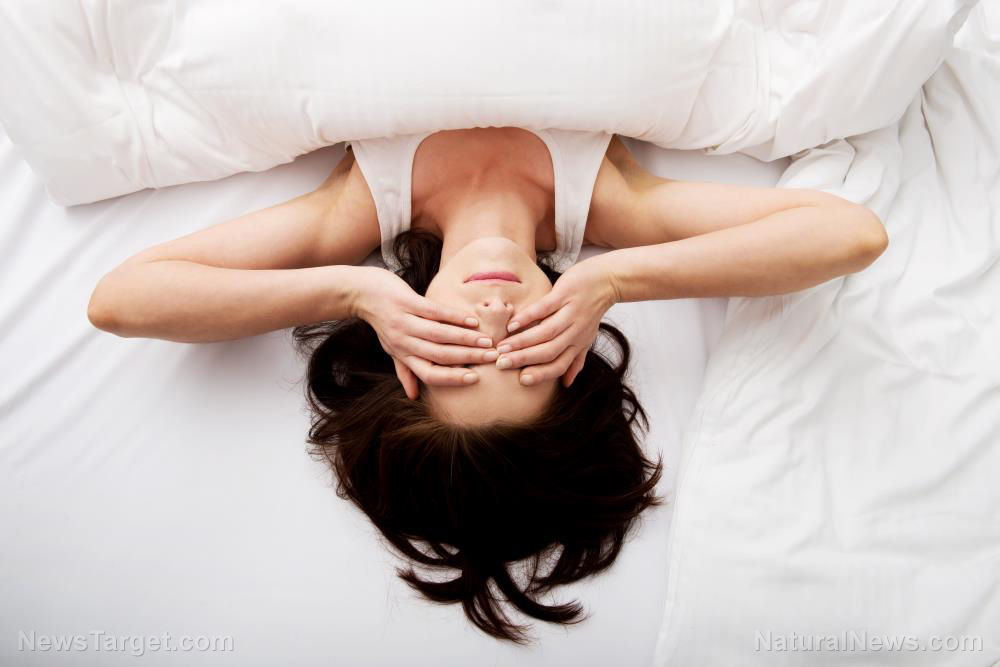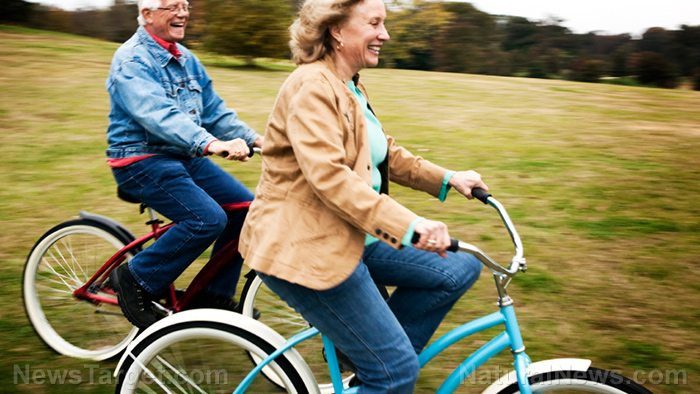6 Pressure points to activate for a good night’s sleep
06/11/2021 / By Zoey Sky

Acupressure is a traditional Chinese practice that is often used to address minor health complaints. It’s even used to relieve sleep disorders like insomnia.
If you are having trouble sleeping, try activating the six acupressure points listed below for better sleep.
Acupressure and qi
Some studies show that acupressure can be used as an alternative treatment for sleep disorders. Acupressure was developed to promote the movement of qi (pronounced “chi”), the vital energy that circulates throughout the body. The ancient Chinese believed that qi flows through channels called meridians.
Blockages in these meridians can disrupt the flow of qi, and this can cause chronic illnesses, pain and sleeplessness. But if you apply pressure on acupoints along your body, you can get rid of blockages and allow qi to flow freely through your meridians. These acupoints have assigned numbers and organs.
While acupressure and acupuncture are guided by similar principles, the latter uses needles to stimulate acupoints. Meanwhile, acupressure practitioners use massage and firm touch.
In a 2017 study, researchers worked with 112 volunteers to compare the effects of acupuncture and sleep medication on insomnia. They found that both treatments helped improve sleep quality in the participants after a month. However, acupuncture proved more effective than sleep medication, suggesting that acupressure may offer the same benefits.
To do acupressure at home, apply gentle but firm pressure with your hand, fingers, fist or a massager. Try activating these six acupressure points to improve your sleep quality.
An Mian
An Mian refers to acupoints traditionally used in acupressure and acupuncture to treat insomnia. These points can also be used to relieve other symptoms like anxiety, headaches and vertigo.
The An Mian points are located on either side of your neck. To find these points, place a finger behind each earlobe, then move your fingers just behind the bony protrusion. Use light pressure.
HT7 (Shen Men)
HT7 is located on the underside of your wrist, just under the bottom of your hand. Bend your hand forward slightly and look for the crease. Apply pressure to the outermost part of this crease.
In a 2010 study, researchers worked with 50 older adults from a long-term care facility who were suffering from insomnia. They divided the participants into two groups. The experimental group received acupressure on the HT7 point on both wrists for five weeks, while the control group received only a light touch in the same place.
The researchers reported that the acupressure group had significantly better sleep scores than the control group throughout the trial and up to two weeks afterward. This suggests that applying acupressure on the HT7 point is an effective natural treatment for insomnia. (Related: Self-administered acupressure helps relieve migraine symptoms, improves sleep quality: Study.)
KD3 (Taixi)
Stimulating the KD3 point can also help relieve insomnia. This point is located just above your heel on the inside of your foot.
In a 2014 study, researchers reported that using acupressure on points KD3 and HT7 helped improve sleep quality in middle-aged and older adult volunteers with hypertension. Activating the two points also helped restore their blood pressure to healthy levels.
LV3 (Tai Chong)
LV3 can help relieve unexplained insomnia along with stress and anxiety-related sleeplessness. This acupoint can be found where the skin of your big toe and the next toe connect. Apply firm and deep pressure on the spot.
In a study involving breast cancer survivors, researchers examined the effects of acupressure on fatigue and sleep quality. They found that applying pressure to the LV3 point for three minutes helped improved sleep in the volunteers.
SP6 (San Yin Jiao)
Point SP6 can help relieve insomnia, menstrual cramps, urinary issues and other pelvic problems. You can locate SP6 by finding the highest point of your ankle on the inside of your leg. Start at the top of your ankle and measure four finger-widths up your leg. Apply deep pressure just behind the bone above your ankle.
In a 2016 study, researchers asked breast cancer survivors to adopt a relaxing acupressure routine that included applying pressure to SP6 for three minutes. The volunteers reported that this routine helped improve their sleep and quality of life. However, acupressure researchers caution that pregnant women should avoid applying pressure to the SP6 point.
Yin Tang
The Yin Tang point is located in the center of your eyebrows, just above the nose. Apply pressure to this point to help relieve insomnia and other issues like agitation, fear and restlessness.
For best results, try using other sleep strategies with acupressure, such as:
- Not using your electronics two hours before your bedtime.
- Waking up and going to bed at the same time every day.
- Darkening your bedroom and keeping it cool and quiet.
- Listening to soothing music.
- Meditating before bed.
According to research, at least 10 to 30 percent of people experience insomnia. Being sleep-deprived will negatively affect your overall health and well-being.
Acupressure is a natural and low-risk alternative to sleep medication. If you plan on using acupressure to address insomnia, consult with a natural health practitioner, an acupuncturist or a massage therapist to understand how to maximize its benefits.
Sources include:
Submit a correction >>
Tagged Under:
acupressure, alternative medicine, Chinese medicine, insomnia, mind body science, natural cures, natural medicine, Naturopathy, remedies, sleep, sleep disorders
This article may contain statements that reflect the opinion of the author
RECENT NEWS & ARTICLES
AgingSecrets.News is a fact-based public education website published by Aging Secrets News Features, LLC.
All content copyright © 2018 by Aging Secrets News Features, LLC.
Contact Us with Tips or Corrections
All trademarks, registered trademarks and servicemarks mentioned on this site are the property of their respective owners.





















